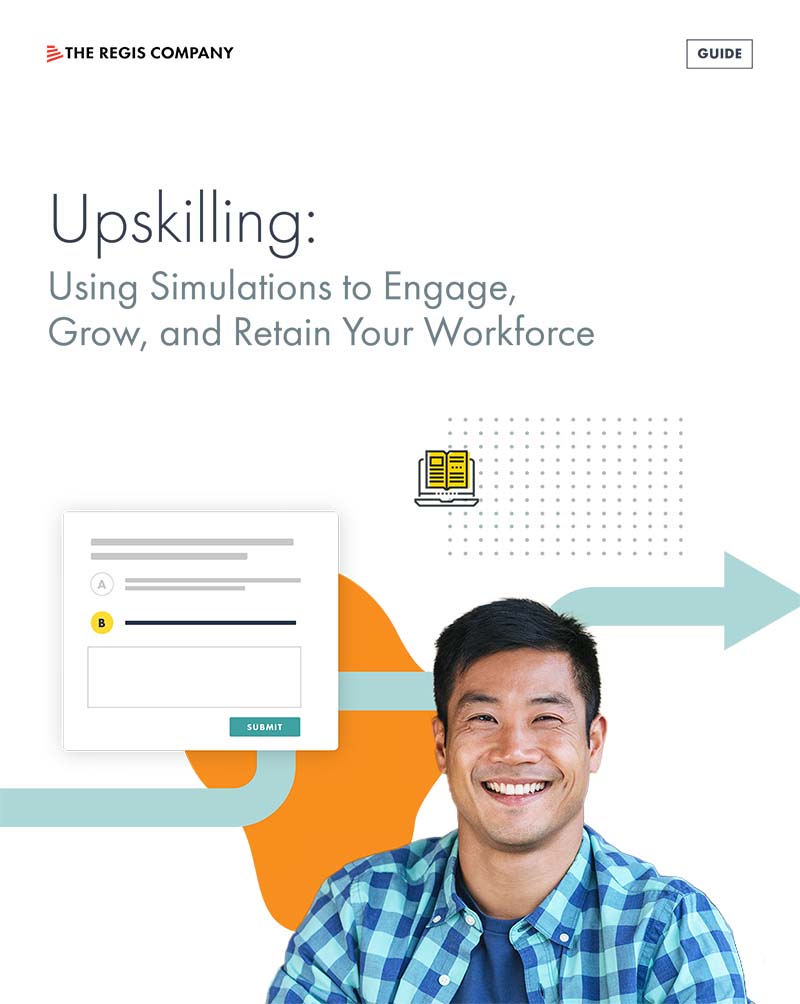Skyrocket Engagement & Learning? Yes, Please.
The purpose of upskilling employees is to re-engage them in their jobs and teach them valuable skills that they can apply to their current role and to their career at large.
Learning leaders often turn to passive eLearning, as it is a low cost and easy to scale. This might look like “click next” learning, simple quizzes, or audio/video and simple activities.
The problem? This type of learning ranks low on engagement and effectiveness for anything that requires nuanced, complex thinking, such as business acumen, strategic thinking, or diversity, equity, and inclusion (DEI).
How, then, do you craft effective, engaging, training programs that are scalable, affordable, and easy to manage and deploy?
That’s where experiential learning comes in.
Rather than lectures, quiz click-throughs, and so on, experiential learning requires the learner to act in the real world. It focuses on inquiry, application, and authentic learning opportunities.
Simulations – Effective, Engaging, Affordable (Really.)
For richer learning experiences, simulations are an excellent method of upskilling employees while helping them learn skills by practicing them firsthand, and building confidence in their roles. They allow employees to get engaged despite working from home, create real-life scenarios that turn into distinct muscle memory, and upskill employees with new knowledge that applies to their specific role in the organization.
Training simulations go beyond the usual learning process to deliver real-life experiences that require participation and collaboration to be properly executed. Rather than traditional training methods or elearning, simulations create an environment where the individual learns real experience in a near-real setting. They are designed to echo complicated, collaborative situations for absorbing experiences and lessons that stick.


